Muscle soreness is a familiar companion to anyone engaging in resistance training, high-intensity workouts, or physically demanding activities. It often emerges a day or two after exertion and can range from mildly uncomfortable to seriously debilitating. Amid the quest for faster recovery and improved performance, one question repeatedly surfaces: does protein help with soreness? This inquiry is more than just a casual curiosity—it underpins modern sports nutrition, rehabilitation protocols, and lifestyle advice for both athletes and everyday exercisers.
You may also like : The Ultimate High-Protein Nutrition Plan: How to Gain Muscle in Women Safely and Effectively
Understanding the connection between protein intake and muscle soreness involves diving into the complex mechanisms of muscle damage, repair, inflammation, and nutrient utilization. For many, soreness is viewed as a sign of progress, an indicator that the muscles are responding to training stimuli. But when discomfort interferes with movement, motivation, or sleep, effective recovery becomes essential. While rest, hydration, stretching, and massage are common remedies, dietary strategies—particularly protein consumption—are gaining increasing attention as potentially powerful tools to accelerate healing and minimize discomfort.
To unravel the science behind this phenomenon, we must explore how muscles respond to stress, how protein supports recovery, and what the latest research says about its role in alleviating soreness. This article will examine the physiological roots of muscle soreness, the types of protein most effective in recovery, optimal timing and dosage, and evidence-based strategies for using protein to support muscular health.
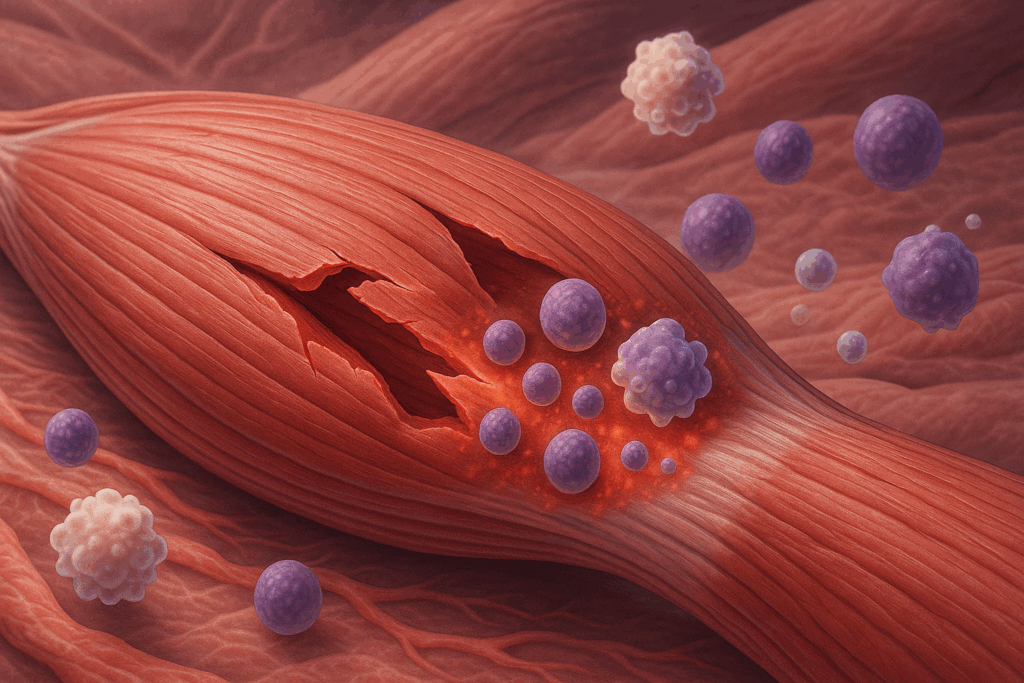
What Causes Muscle Soreness? A Closer Look at DOMS
Delayed onset muscle soreness (DOMS) is the term most often associated with the post-exercise pain that sets in within 24 to 72 hours after intense physical activity. Contrary to popular belief, DOMS is not primarily caused by lactic acid buildup. Rather, it results from microtears in muscle fibers that occur during eccentric movements, where the muscle lengthens while under tension, such as during the downward phase of a bicep curl or running downhill.
These microscopic injuries trigger an inflammatory response, recruiting immune cells and releasing chemical mediators that facilitate the healing process. This cascade of events not only repairs the damaged fibers but also leads to structural adaptation, making the muscles stronger and more resilient. However, this healing process can also produce swelling, stiffness, and pain—the classic symptoms of DOMS.
Inflammation is a double-edged sword in this scenario. On the one hand, it is essential for tissue regeneration. On the other, excessive or prolonged inflammation may delay recovery, contribute to further tissue damage, or impair performance. This is where nutrition, especially protein, may modulate the recovery process, not only by supplying the necessary building blocks for repair but also by influencing the body’s inflammatory response.
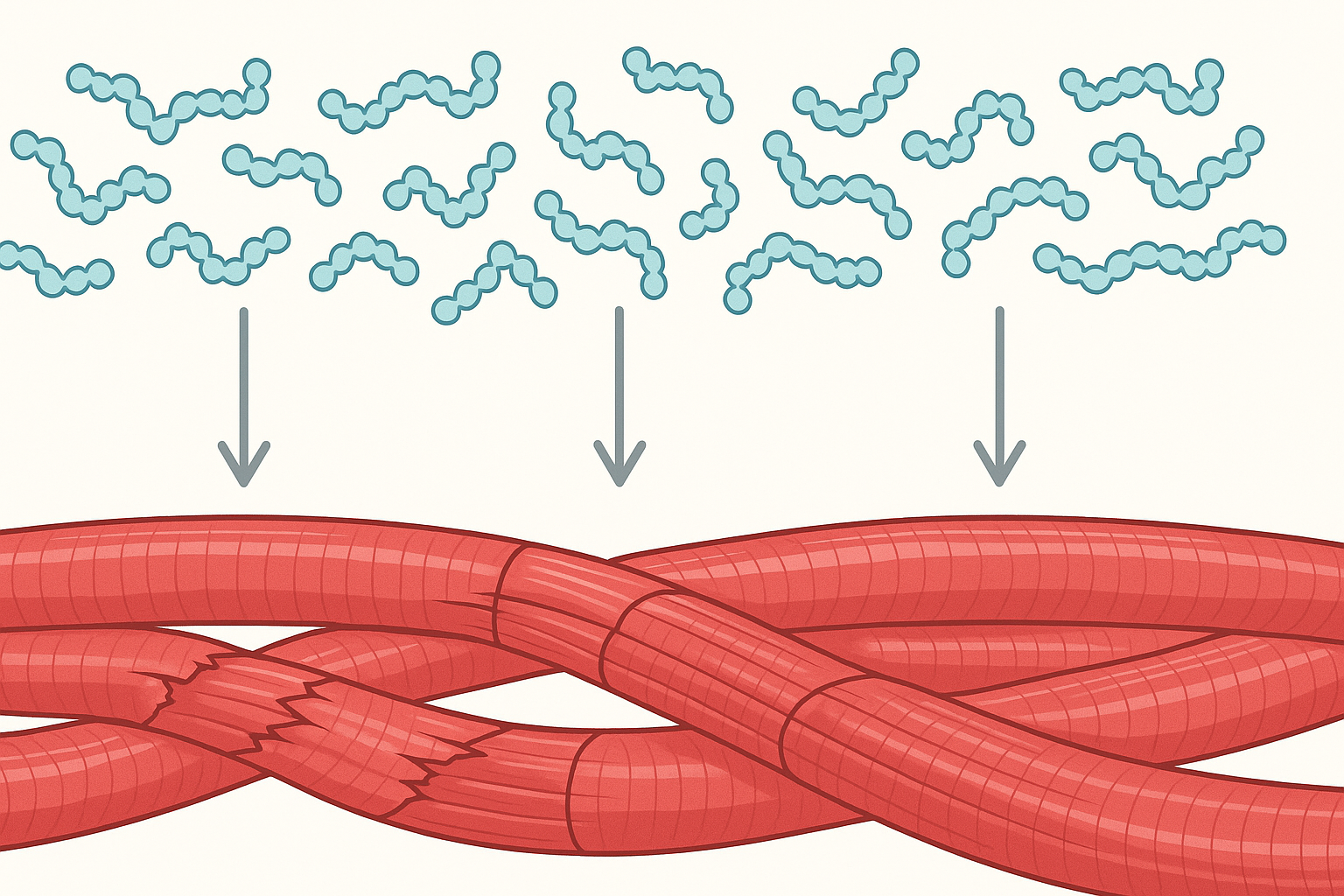
The Role of Protein in Muscle Repair and Recovery
Muscle tissue is composed primarily of protein structures, making dietary protein essential for both maintenance and repair. When muscles experience stress or injury, such as that incurred during strenuous exercise, the body initiates a complex repair process involving the synthesis of new proteins to replace damaged ones. Amino acids, the building blocks of protein, are required to facilitate this process.
Among the amino acids, leucine stands out as a key regulator of muscle protein synthesis (MPS). Leucine activates the mTOR (mammalian target of rapamycin) pathway, a cellular signaling mechanism that promotes the creation of new muscle proteins. Without adequate leucine and other essential amino acids, the body’s ability to repair tissue and recover efficiently diminishes.
In this context, protein plays a vital role in not only building muscle but also reducing the duration and intensity of soreness. Studies suggest that consuming high-quality protein sources post-exercise can improve recovery times, enhance muscle regeneration, and potentially reduce the severity of DOMS. This brings us back to the central question: does protein help with soreness? And if so, how can we optimize its use?
Does Protein Help with Soreness? Exploring the Scientific Evidence
Scientific inquiry into whether protein helps with soreness has yielded nuanced but promising results. Several studies have investigated the effects of post-exercise protein intake on markers of muscle damage, inflammation, and subjective soreness ratings.
A study published in the Journal of the International Society of Sports Nutrition found that whey protein supplementation immediately after resistance training reduced perceived muscle soreness in recreational athletes compared to a carbohydrate-only control. Participants who consumed protein reported not only less pain but also quicker returns to baseline strength levels.
Another trial involving endurance athletes demonstrated that casein protein, taken before bedtime, improved overnight muscle protein synthesis and reduced next-day soreness. Casein’s slow digestion rate may provide a sustained release of amino acids, supporting overnight repair processes and helping to mitigate inflammation.
Although results vary depending on variables such as the type of protein, exercise protocol, and individual fitness level, the overall consensus points to a beneficial role for protein in easing discomfort. This does not suggest that protein alone is a cure-all, but rather that it should be considered a central component in a multifaceted recovery strategy.
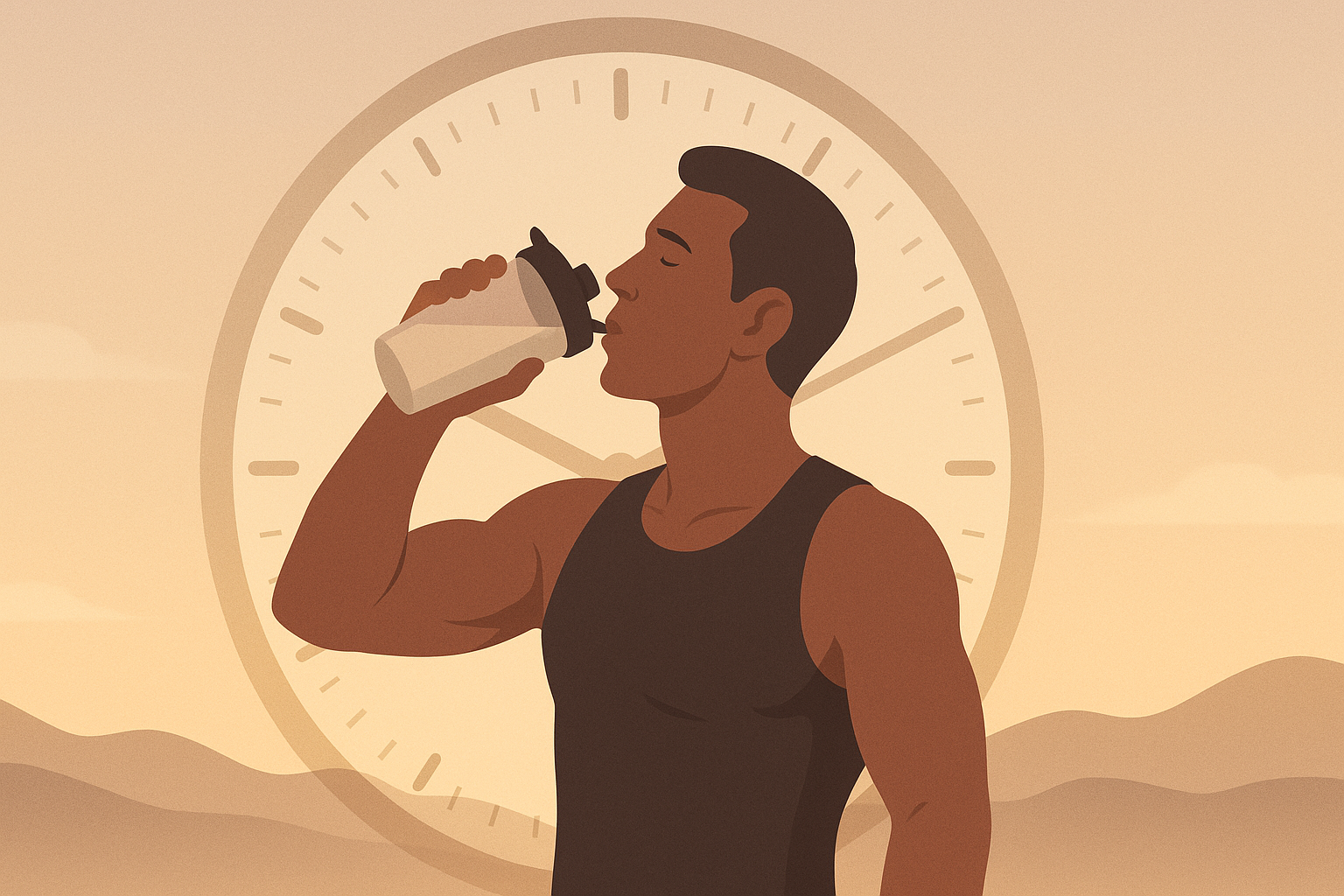
How Timing Affects Whether Protein Helps with Soreness
Timing matters when it comes to nutritional interventions, and protein is no exception. The so-called “anabolic window” refers to the period immediately following exercise when the body is especially primed to absorb and utilize nutrients for recovery and adaptation. Consuming protein within 30 to 60 minutes post-exercise can maximize muscle protein synthesis and reduce markers of damage.
However, emerging research suggests that the anabolic window may be wider than previously thought, and that total daily protein intake may be more important than precise timing. Nonetheless, consuming protein post-workout remains a practical and effective strategy for promoting repair and easing soreness.
Pre-sleep protein consumption, particularly in the form of casein, has also gained attention. Because the body continues to recover while we sleep, providing a slow-digesting source of amino acids may sustain muscle protein synthesis throughout the night. This approach may be particularly helpful for reducing next-day soreness and improving recovery efficiency.
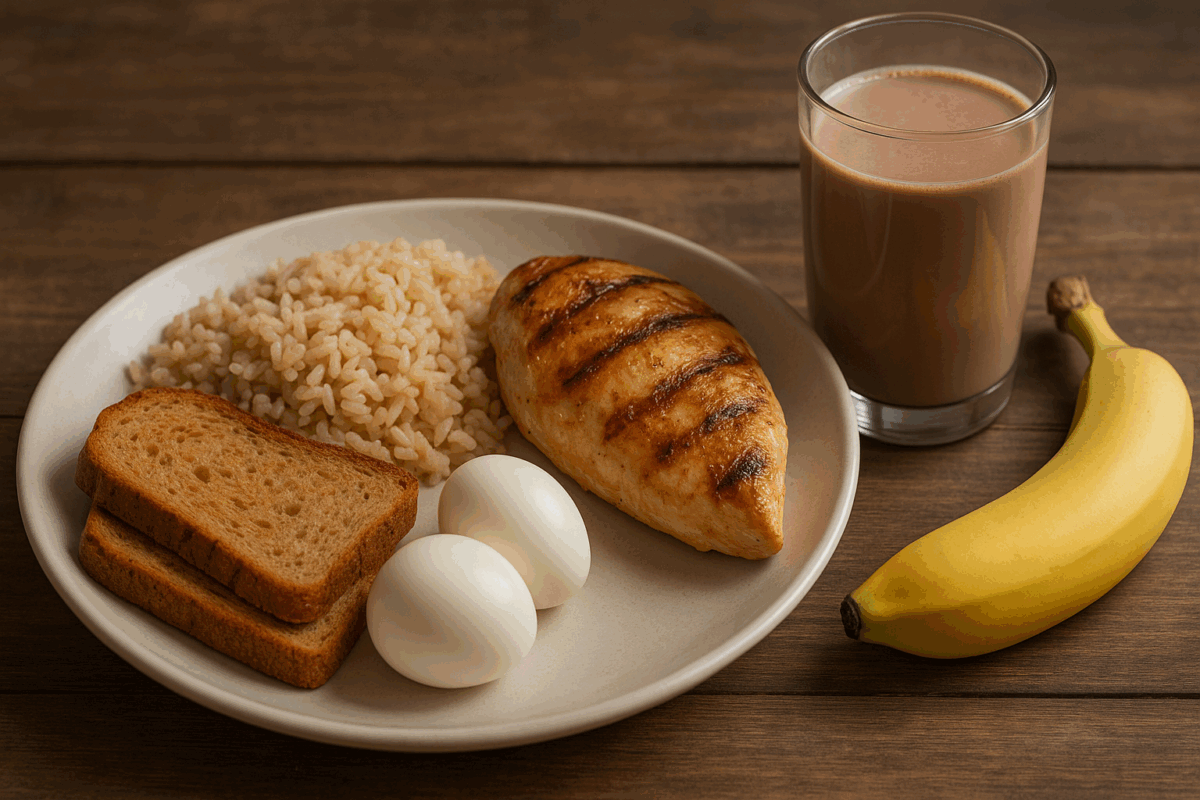
Does Protein Help with Soreness When Combined with Carbohydrates?
Carbohydrates play a complementary role in recovery by replenishing glycogen stores and supporting the insulin response, which enhances amino acid uptake into muscle cells. When protein is combined with carbohydrates post-exercise, the synergistic effects may amplify recovery outcomes.
For instance, chocolate milk—a popular post-workout beverage—offers a balanced ratio of protein and carbs, making it effective for both muscle repair and energy restoration. Studies have shown that such combinations not only improve performance in subsequent training sessions but also reduce perceptions of fatigue and soreness.
That said, the protein component is still critical. While carbs help with energy replenishment, they do not provide the essential amino acids needed for structural repair. Therefore, while protein-carb combinations are beneficial, protein should remain the centerpiece when addressing the question, “does protein help with soreness?”
Can Protein Help Muscle Soreness in Trained vs. Untrained Individuals?
The benefits of protein for muscle soreness may vary depending on the individual’s training status. Novices typically experience more pronounced DOMS due to unfamiliar stress on muscles, while seasoned athletes tend to have adaptive mechanisms that attenuate inflammation and damage.
That said, protein supplementation benefits both groups, albeit in different ways. For beginners, it supports the healing of more extensive damage and fosters faster adaptation to new training stimuli. For experienced athletes, it helps fine-tune recovery and preserve lean muscle mass during periods of heavy training or caloric deficit.
Additionally, older adults and individuals with chronic conditions may derive particular benefit from protein supplementation, as their capacity for muscle regeneration tends to be lower. Ensuring adequate protein intake can help mitigate sarcopenia, improve functional capacity, and reduce injury risk.
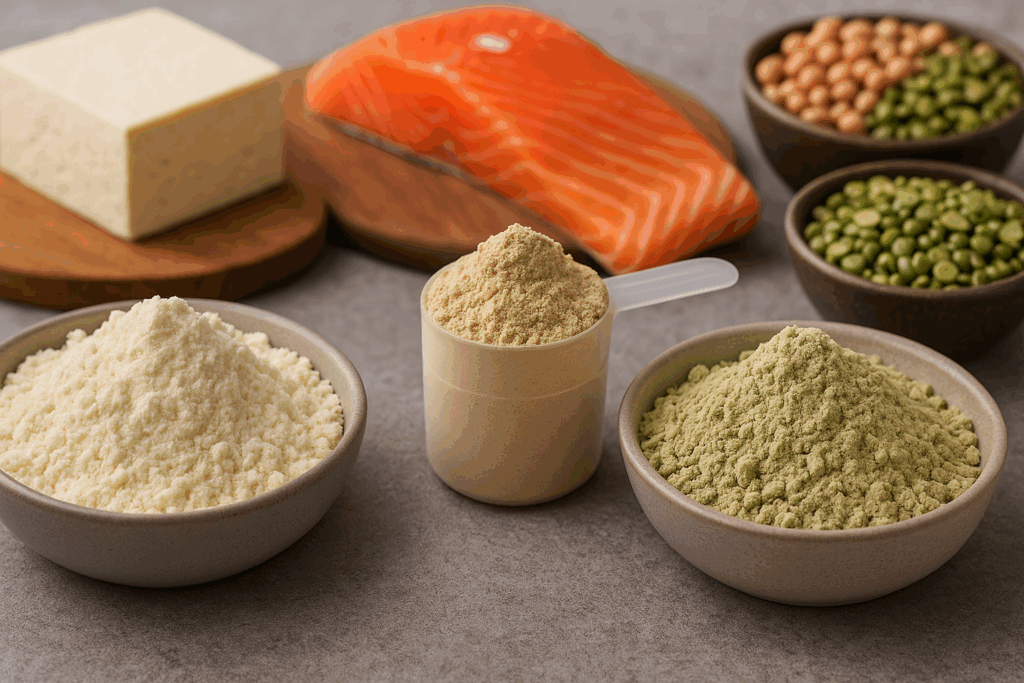
Types of Protein That May Help with Muscle Soreness
Not all proteins are created equal, and the type of protein consumed can significantly influence recovery outcomes. Whey protein is perhaps the most studied due to its rapid digestibility and high leucine content. It is ideal for post-workout recovery and has demonstrated consistent benefits in reducing soreness and accelerating muscle repair.
Casein, on the other hand, is absorbed more slowly and is better suited for sustained amino acid delivery. It is often recommended for nighttime consumption and has been shown to improve overnight muscle protein synthesis.
Plant-based proteins, such as soy, pea, and rice, offer alternatives for vegetarians and vegans. While some plant proteins are lower in certain essential amino acids, combining them can achieve a complete amino acid profile. Recent advancements in formulation have made plant-based protein powders more comparable in efficacy to animal-based options.
Collagen peptides are another emerging category, particularly for joint and connective tissue recovery. Though not rich in branched-chain amino acids, collagen may play a complementary role in overall musculoskeletal health.
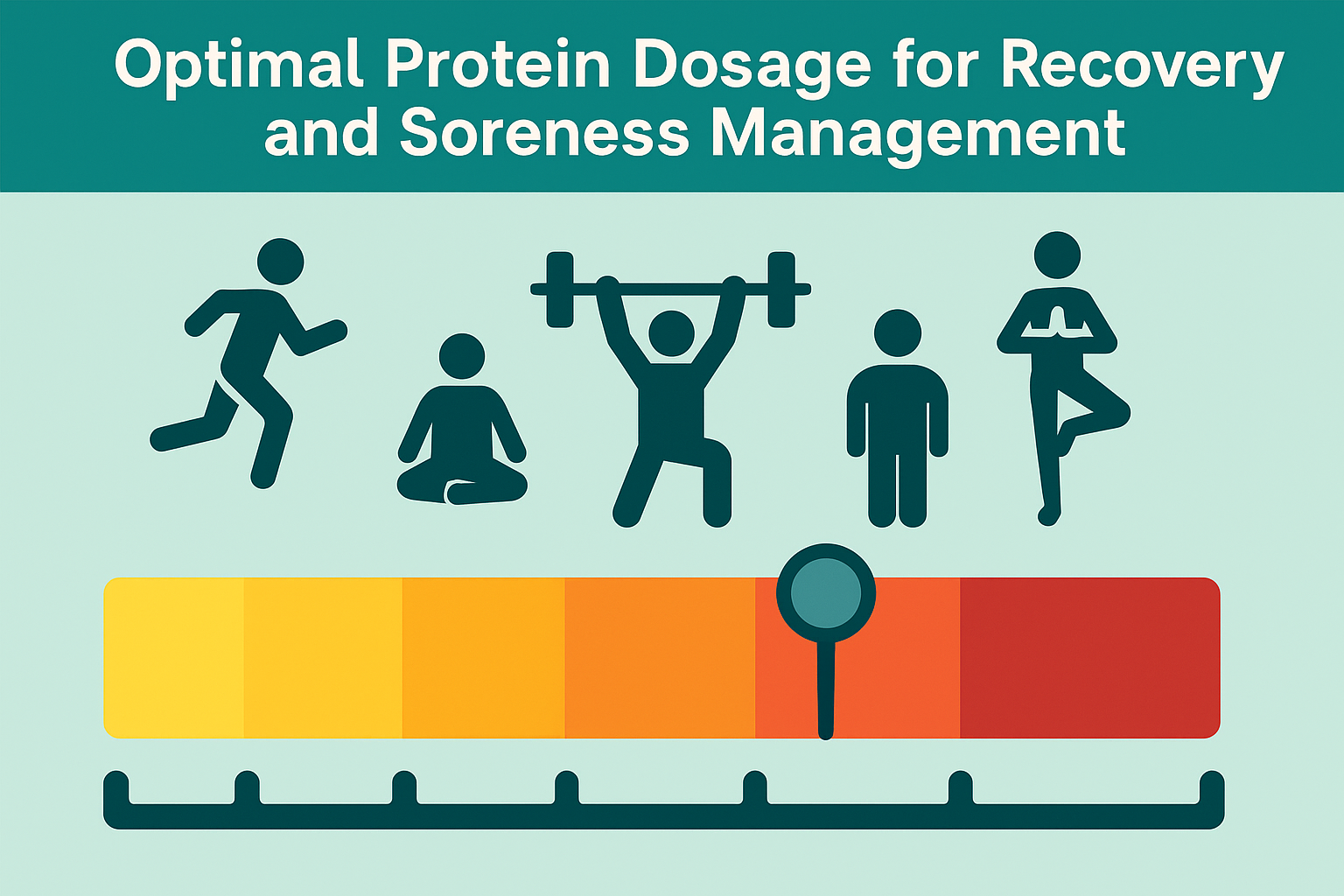
Optimal Protein Dosage for Recovery and Soreness Management
Determining the optimal protein dosage depends on factors such as body weight, activity level, and dietary habits. General guidelines suggest that active individuals consume between 1.2 to 2.0 grams of protein per kilogram of body weight per day.
For muscle recovery specifically, studies support a post-exercise dose of 20 to 40 grams of high-quality protein. Higher doses may be warranted for individuals engaging in prolonged or intense training, older adults with anabolic resistance, or those in caloric deficits.
Distributing protein intake evenly across meals can also improve utilization and maintain a steady supply of amino acids. This approach ensures that the muscles receive consistent support throughout the day, potentially mitigating soreness and enhancing performance.
Does Protein Help with Soreness After Different Types of Workouts?
Protein’s role in recovery is not limited to strength training. Whether the workout involves endurance, high-intensity interval training (HIIT), plyometrics, or even prolonged aerobic activity, protein can aid in reducing muscle damage and soreness.
In endurance athletes, for example, protein supplementation has been shown to reduce markers of oxidative stress and improve muscle recovery. In HIIT participants, protein helps buffer the breakdown of muscle tissue, which can be extensive due to the high intensity and short rest intervals.
Even non-traditional forms of exercise like yoga or dance, when performed at high intensity or for long durations, can cause muscle strain and benefit from post-session protein intake. The universal principle remains: muscles under stress require adequate repair, and protein provides the raw materials for that process.
Long-Term Benefits of Protein for Recovery and Injury Prevention
Incorporating protein into a consistent recovery routine does more than reduce next-day soreness. Over time, it can lead to improvements in muscle strength, endurance, and resilience. Regular intake of high-quality protein supports the structural integrity of muscles, tendons, and ligaments, reducing the likelihood of strain-related injuries.
Protein also plays a role in immune function, particularly during periods of heavy training when susceptibility to illness may increase. Ensuring sufficient intake can bolster immune defenses and minimize training disruptions due to illness or injury.
Moreover, protein contributes to body composition goals by preserving lean muscle mass during fat loss phases. This can enhance functional performance, mobility, and overall health—benefits that extend well beyond the gym.
Does Protein Help with Soreness When Combined with Other Recovery Strategies?
While protein is essential, it works best when integrated into a holistic recovery plan. Adequate sleep, hydration, stretching, massage, and active recovery techniques all contribute to reducing soreness and promoting healing.
Certain supplements, such as omega-3 fatty acids, creatine, and tart cherry juice, have also demonstrated anti-inflammatory or recovery-enhancing properties. When used alongside protein, these can further support the muscle repair process.
Mind-body practices like meditation and deep breathing may help reduce stress-induced inflammation, indirectly supporting recovery. Nutrition and lifestyle choices should be viewed as interconnected elements of a comprehensive strategy.
A Balanced Diet: The Foundation of Effective Recovery
No supplement can compensate for a poor diet. While protein plays a pivotal role, it must be contextualized within a broader dietary pattern that supports overall health and performance. Micronutrients such as vitamin D, magnesium, zinc, and antioxidants play supporting roles in muscle function and recovery.
Whole foods rich in fiber, phytonutrients, and healthy fats provide the foundation for a well-functioning body. Emphasizing a colorful, diverse, and nutrient-dense diet ensures that the body has the tools it needs to recover, grow, and adapt.
Relying solely on protein shakes or bars without considering total dietary quality can lead to imbalances or deficiencies. Integrating protein into whole meals—such as eggs with vegetables, lentil stew, or grilled salmon with quinoa—offers a more effective and sustainable approach to recovery.
Environment, Altitude, and Recovery Needs
Environmental factors like heat, humidity, and altitude add additional stress to the body during exercise. Training in high heat increases core temperature and accelerates muscle breakdown, while altitude reduces oxygen availability, which can impair recovery and amplify soreness.
In such conditions, protein needs may increase due to heightened catabolism and oxidative stress. Athletes training in these environments often benefit from higher-than-normal protein intake, as well as antioxidant-rich foods, to buffer against additional damage. Moreover, altitude training may benefit from nitrate-rich proteins like beetroot blends, which improve vascular function and oxygen delivery.
Nutritional Synergies: How Protein Works with Micronutrients
While macronutrients form the foundation of recovery, micronutrients act as cofactors in many of the same biological processes. For instance, magnesium supports ATP production and muscle relaxation, zinc facilitates immune function and tissue repair, and vitamin D enhances protein synthesis through its role in gene expression.
Protein and these micronutrients often work synergistically. Without adequate vitamin B6, for example, the body cannot properly utilize amino acids. Likewise, iron deficiency impairs oxygen delivery, prolonging fatigue and perceived soreness. Ensuring adequate intake of supportive micronutrients enhances protein’s effectiveness in repairing and rebuilding muscle.
The Psychobiology of Soreness: Mood, Motivation, and Nutritional Support
Soreness doesn’t exist in a vacuum—it can influence psychological variables like mood, motivation, and even adherence to training programs. Chronic or severe soreness may increase stress hormones like cortisol, reduce motivation, and foster negative perceptions of exercise.
Protein’s role in mental recovery is often overlooked. Amino acids like tyrosine and tryptophan serve as precursors for dopamine and serotonin, neurotransmitters involved in motivation and mood regulation. Protein intake, particularly after difficult sessions, may stabilize mood and reduce the psychological burden of soreness.
Furthermore, protein-rich meals may enhance satiety and stabilize blood sugar, both of which contribute to emotional regulation during recovery phases. Athletes who feel mentally and emotionally better tend to perceive less pain, which further reinforces the importance of protein in holistic soreness management.
Chronic Low-Grade Inflammation and Recovery Limitations
For individuals with obesity, metabolic syndrome, or autoimmune disorders, chronic low-grade inflammation can impair muscle regeneration and exacerbate post-exercise soreness. In such cases, even moderate activity may induce disproportionately high levels of muscle damage and inflammation.
Here, protein’s anti-inflammatory properties are particularly valuable. Diets rich in omega-3 fatty acids and anti-inflammatory protein sources like salmon, mackerel, or plant-based proteins (e.g., lentils, chickpeas) may reduce systemic inflammation and improve exercise tolerance. Specific amino acids like cysteine and methionine support glutathione production, the body’s master antioxidant, which mitigates oxidative stress post-exercise.
In populations with heightened inflammation, addressing systemic issues through diet may significantly enhance protein’s ability to reduce soreness and facilitate muscle recovery.
Collagen, Connective Tissue, and the Unsung Side of Soreness
Muscle soreness isn’t always about muscle fibers; connective tissue—including tendons, ligaments, and fascia—also experiences strain and microtrauma during training. This is particularly true in sports involving repetitive motion, plyometrics, or explosive change-of-direction movements.
Collagen peptides have gained popularity for their potential to improve connective tissue integrity. When combined with vitamin C and taken an hour before exercise, collagen has been shown to increase the synthesis of collagen in joints and tendons. While not a direct source of muscle-building amino acids, collagen may reduce joint-related soreness and support overall structural recovery—especially for athletes prone to overuse injuries.
How to Tailor Protein Intake Based on Personal Goals and Soreness Levels
Different individuals have different needs based on their goals, training volume, and responses to soreness. Athletes preparing for competition may prioritize rapid recovery, while recreational exercisers might seek balance and sustainability.
Monitoring soreness levels, sleep quality, energy levels, and performance can help tailor protein intake. If recovery feels slow or soreness lingers for days, it may be a sign that protein intake is insufficient or mistimed.
Working with a sports dietitian or healthcare provider can further personalize nutrition strategies. They can assess dietary patterns, identify gaps, and recommend evidence-based interventions to support optimal muscle health.
Frequently Asked Questions About Protein and Muscle Soreness
1. How does protein influence the long-term adaptation to repeated soreness?
Protein doesn’t just assist with short-term recovery—it plays a critical role in building long-term muscular resilience. With consistent protein intake following strenuous workouts, the body becomes more efficient at repairing microtears, reducing inflammatory signaling, and improving the coordination of repair enzymes. Over time, this leads to better adaptation to repeated eccentric or high-intensity movements, which can help minimize future episodes of soreness. What’s particularly important is that chronic underconsumption of protein may limit this adaptive process, resulting in a plateau or even regression in performance. By contrast, a steady supply of complete protein enhances the remodeling of muscle fibers, increasing their tolerance to mechanical stress.
2. Can protein help muscle soreness that occurs due to overtraining or cumulative fatigue?
Yes, but with nuances. In cases of overtraining or prolonged fatigue, muscle damage is often accompanied by systemic inflammation, hormonal imbalances, and central nervous system strain. Here, the question shifts from “can protein help muscle soreness” in general to how it can contribute to holistic recovery. Protein supports endocrine function, particularly by stabilizing cortisol levels, which can become elevated under chronic stress. Moreover, amino acids like glutamine help maintain gut barrier function, reducing endotoxin translocation—a contributor to inflammation during overtraining. Though not a complete fix, protein, when paired with adequate rest and micronutrient support, can shorten the recovery window and improve tolerance to cumulative stress.
3. Does protein help with soreness differently depending on age and biological stage?
Absolutely. Aging is accompanied by anabolic resistance, meaning older adults require higher doses of protein to trigger the same level of muscle protein synthesis as younger individuals. This makes soreness more prolonged and recovery slower in aging populations. Leucine-rich protein sources become particularly important here, as leucine is a key driver of the mTOR pathway that initiates repair. Adolescents and young adults, on the other hand, may recover more quickly but still benefit from timed protein intake to enhance growth and performance outcomes. Pregnancy, menopause, and periods of hormonal transition can also impact recovery mechanisms, so protein should be adjusted accordingly to maintain muscle integrity and reduce soreness susceptibility.
4. How does protein interact with hydration and electrolyte status in muscle recovery?
Protein cannot work effectively in a vacuum—it relies on proper hydration and electrolyte balance for digestion, absorption, and cellular repair. Dehydrated muscle tissue is more prone to damage and slower to heal. Sodium, potassium, and magnesium all play roles in cellular transport, including the movement of amino acids into muscle cells. Moreover, protein metabolism itself generates waste products like urea, which require sufficient water for excretion. Therefore, for individuals asking “does protein help sore muscles,” the answer hinges in part on their hydration status. Pairing protein intake with electrolyte-rich fluids post-exercise maximizes nutrient delivery, improves circulation, and enhances soreness reduction.
5. What are the best practical strategies for using protein to reduce soreness in high-frequency training programs?
In high-frequency programs where the same muscle groups are engaged multiple times per week, protein timing becomes more critical. A combination of fast-absorbing protein (like whey) immediately after training and slow-release protein (such as casein) before bed can offer around-the-clock support. Consuming moderate amounts (20–30 grams) of protein every 3–4 hours throughout the day ensures a continuous supply of amino acids for repair. Additionally, layering in protein-rich snacks—such as Greek yogurt, hard-boiled eggs, or protein smoothies—between meals maintains muscle anabolism. For athletes asking “does protein help with soreness” during rigorous cycles, the key is not just total intake but frequency and distribution.
6. Does protein help with soreness linked to inflammation from autoimmune or metabolic conditions?
For individuals managing autoimmune diseases or chronic inflammation (like rheumatoid arthritis or type 2 diabetes), soreness may be a more persistent issue. In these populations, protein plays a dual role: it supports muscle recovery and helps regulate the immune system. Certain amino acids—such as cysteine and arginine—aid in the production of glutathione and nitric oxide, compounds that reduce oxidative stress and enhance blood flow. Moreover, high-quality protein can stabilize blood sugar levels, which is essential for inflammation control in metabolic conditions. So yes, protein does help with soreness in these cases, but it must be integrated into an anti-inflammatory dietary approach that includes omega-3s, fiber, and phytonutrients.
7. What role do protein blends play in supporting muscle recovery and alleviating soreness?
Protein blends that combine multiple sources—such as whey, casein, and soy—provide both fast and sustained amino acid release. This dual-phase approach is especially useful for athletes with long training sessions or those who may not be able to eat again for several hours post-workout. Blends also improve amino acid diversity, covering gaps that may exist in isolated sources. For instance, combining rice and pea protein creates a complete amino acid profile, suitable for vegans seeking soreness relief. If you’re wondering “can protein help muscle soreness” more effectively in blended forms, the answer is yes—particularly when consistent availability of amino acids is required to offset continuous muscle strain.
8. Does protein help sore muscles better when combined with active recovery techniques?
Active recovery—such as light cycling, swimming, or yoga—stimulates circulation, flushes out metabolic waste, and supports lymphatic drainage. When paired with protein intake, these benefits are amplified. Enhanced blood flow delivers amino acids more efficiently to damaged tissues, accelerating the healing process. Additionally, low-intensity movement can upregulate the expression of satellite cells, especially when supported by the nutrients found in protein-rich foods. Thus, for individuals engaging in active recovery and asking “does protein help with soreness,” the answer is not only affirmative—it’s synergistic. Combining the two techniques creates an ideal environment for muscle regeneration.
9. Does protein help with soreness from endurance activities like marathons or triathlons?
Although endurance athletes traditionally focus on carbohydrates, they still experience muscle microtrauma, especially after prolonged efforts. Protein helps endurance athletes maintain lean mass during training, prevent overuse injuries, and shorten the recovery period after events. During extended sessions, muscle protein breakdown can exceed synthesis, leading to soreness that lingers for several days. Supplementing with protein during and after these activities replenishes lost amino acids and supports structural repair. For marathoners and triathletes, asking “does protein help sore muscles” is especially relevant during peak training and tapering phases when tissue preservation is essential.
10. Can novel protein sources like insect or algae protein support soreness recovery?
Yes, and they’re gaining traction as sustainable and functional alternatives. Cricket protein, for instance, contains all essential amino acids and is high in bioavailable iron and B12—both important for muscle oxygenation and recovery. Algae proteins like spirulina and chlorella provide not only amino acids but also anti-inflammatory compounds and antioxidants like phycocyanin. While long-term studies are still limited, early research suggests these proteins can support muscle repair and reduce delayed onset soreness. As demand grows for both eco-conscious and efficient nutrition, these novel sources may redefine how we answer “can protein help muscle soreness” in future dietary guidelines.
Conclusion : Does Protein Help with Soreness?
The answer to the central question—does protein help with soreness?—is a qualified yes. While protein is not a magic bullet that will eliminate muscle pain overnight, it plays an undeniably important role in the repair, regeneration, and resilience of muscle tissue. Scientific evidence supports its use in reducing the severity and duration of soreness, especially when consumed at strategic times and in appropriate amounts.
Protein’s benefits are amplified when combined with other recovery strategies and when tailored to the individual’s lifestyle, training demands, and dietary preferences. For those looking to train smarter, recover faster, and minimize discomfort, investing in protein-rich nutrition is a smart and scientifically grounded decision.
Whether you’re an elite athlete or a weekend warrior, integrating high-quality protein into your daily routine can make the difference between sluggish recovery and sustained progress. In a world where performance and well-being go hand in hand, protein remains a foundational tool for success—and for answering that all-important question: does protein help with soreness?
Further Reading:
Eat to Heal: These 4 Nutrients Can Soothe Sore Muscles
Protein Shakes May Not Do Much for Your Muscles After a Workout





